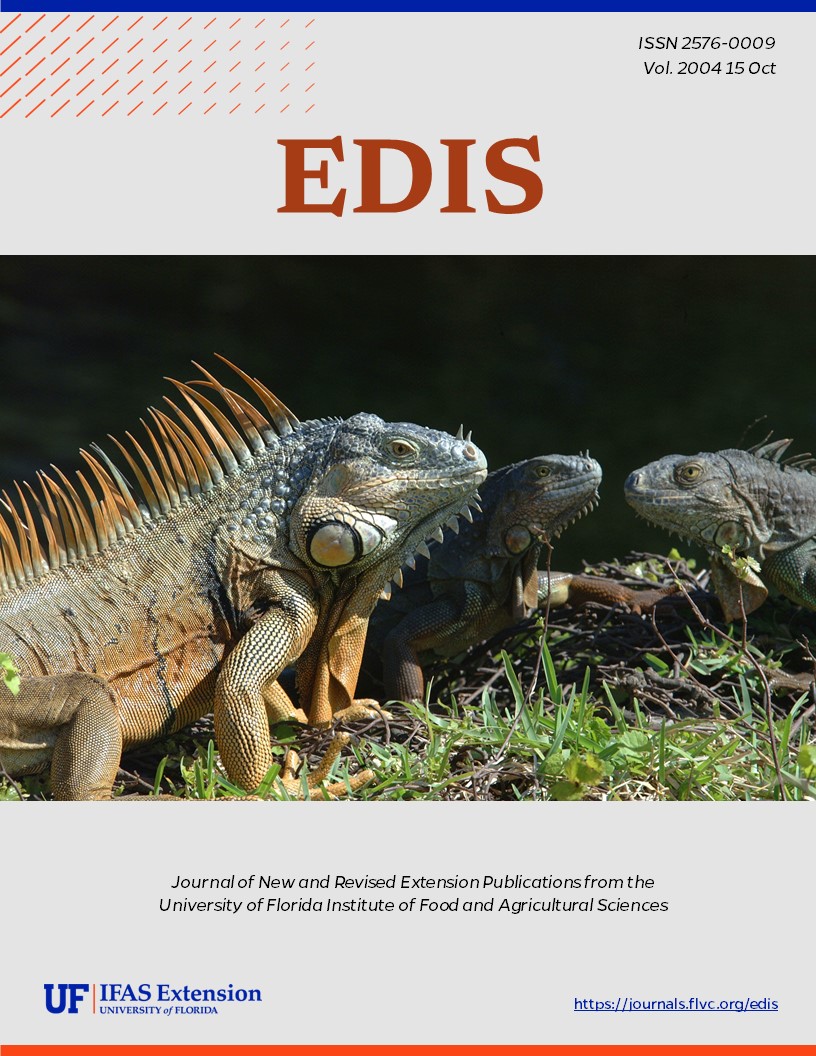Abstract
Due to Florida's prominence in the exotic pet trade, iguanas imported as pets have escaped or been released, and are now established in South Florida. This has created unique problems for Florida's homeowners and businesses. South and Central Florida's subtropical climate allows these large herbivorous (plant-eating) lizards to survive, reproduce, and become part of the Florida environment. This document is Fact Sheet ENY-714, a series of the Entomology and Nematology Department, Florida Cooperative Extension Service, Institute of Food and Agricultural Sciences, University of Florida. Publication date: August 2004.
ENY-714/IN528: Dealing with Iguanas in the South Florida Landscape (ufl.edu)
References
Ashton, R. E., Jr. and P. S. Ashton. 1985. Handbook of Reptiles and Amphibians of Florida, Part II; Lizards, Turtles & Crocodilians. Windward Publishing Inc., Miami, FL. 191 pp.
Bartlett R. D. and P. P. Bartlett. 1999. A Field Guide to Florida Reptiles and Amphibians. Gulf Publishing Co., Houston, TX. 278 pp.
Stafford, P. J. and J. R. Meyer. 2000. A guide to the reptiles of Belize. Academic Press, San Diego, CA. 356 pp.
Wilson, L. D. and L. Porras. 1983. The Ecological Impact of Man on the South Florida Herpetofauna. Museum of Natural History, University of Kansas, Lawrence, KS, Special Publication No. 9. 89 pp. https://doi.org/10.5962/bhl.title.8435
Unless otherwise specified, articles published in the EDIS journal after January 1, 2024 are licensed under a Creative Commons Attribution-NonCommercial-NoDerivs 4.0 International (CC BY-NC-ND 4.0) license.

